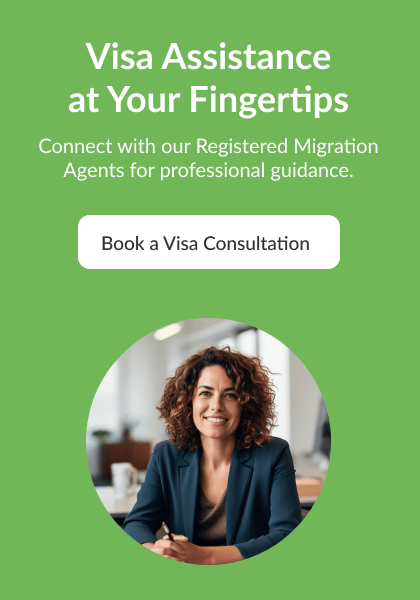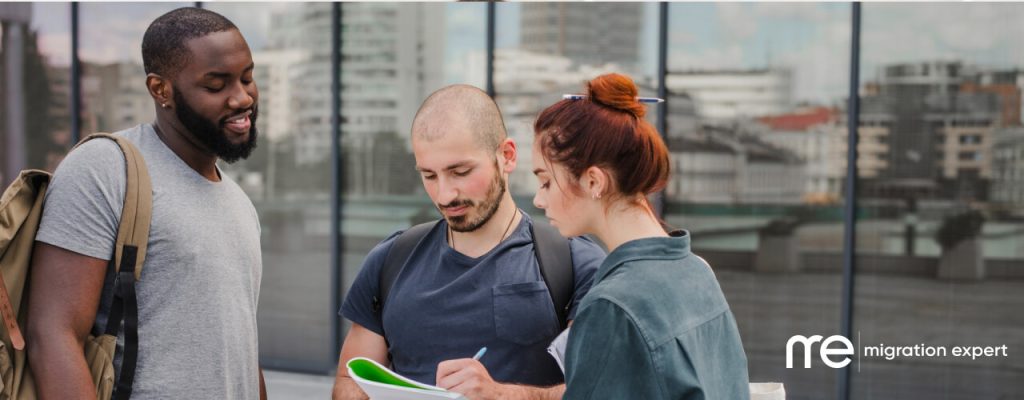The H-1B1 visa is a unique work visa category available exclusively to citizens of Chile and Singapore, created as part of the U.S. free trade agreements with these countries. This visa is designed to facilitate the entry of skilled professionals into the United States, offering a streamlined process for workers in specialised fields such as technology, healthcare, engineering, and finance.
In this blog, we’ll explore the key features of the H-1B1 visa, eligibility criteria, and how it differs from the traditional H-1B visa.
What is the H-1B1 Visa?
The H-1B1 visa is a temporary work visa that allows professionals from Chile and Singapore to work in the United States in specialty occupations. The visa is part of the U.S. trade agreements with Chile and Singapore, providing a faster and more accessible option for skilled workers from these countries to enter the U.S. job market.
Key Features of the H-1B1 Visa:
- Annual Quota: 1,400 visas are allocated annually for Chilean nationals, and 5,400 visas for Singaporean nationals. Unlike the regular H-1B visa, the demand for H-1B1 visas is usually lower, making it easier to secure.
- Validity: The visa is valid for one year, with the possibility of indefinite renewals, making it an attractive option for those seeking short- to medium-term employment.
- No Dual Intent: Unlike the H-1B visa, the H-1B1 does not permit dual intent, meaning applicants must demonstrate that they do not intend to immigrate to the U.S. permanently.
Who is Eligible for the H-1B1 Visa?
The H-1B1 visa is designed for professionals working in specialty occupations that require theoretical and practical application of a body of specialised knowledge. To be eligible for the H-1B1 visa, applicants must:
1. Be a Citizen of Chile or Singapore
Only nationals of Chile and Singapore are eligible for the H-1B1 visa. If you hold citizenship from any other country, you must apply for a different visa category, such as the H-1B.
2. Have a Job Offer from a U.S. Employer
To apply for an H-1B1 visa, you must have a job offer from a U.S. employer. The position must qualify as a specialty occupation, meaning it requires a bachelor's degree or equivalent in a specific field of study. Common fields include IT, engineering, healthcare, finance, and teaching.
3. Hold a Relevant Degree
Applicants must possess at least a bachelor’s degree in a field directly related to the job they are offered in the United States. The degree requirement ensures that the job involves a high level of specialised knowledge.
4. Meet the Non-Immigrant Intent Requirement
Unlike the H-1B visa, the H-1B1 visa requires applicants to show that they do not intend to stay in the U.S. permanently. This means applicants must prove their intent to return to their home country once their employment in the U.S. ends.
How to Apply for the H-1B1 Visa
The process for obtaining an H-1B1 visa is more straightforward than other work visas, as it does not require the U.S. employer to file a petition with U.S. Citizenship and Immigration Services (USCIS) beforehand. Here’s an overview of the steps involved:
1. Job Offer
The first step is securing a job offer from a U.S. employer for a role that qualifies as a specialty occupation. The employer must agree to pay the prevailing wage for the job.
2. Labour Condition Application (LCA)
Your employer must submit a Labour Condition Application (LCA) to the Department of Labour (DOL) to certify that hiring you will not negatively impact the wages and working conditions of U.S. workers. The LCA ensures that the employer is offering fair wages and working conditions.
3. Visa Application
Once the LCA is approved, you can apply for the H-1B1 visa at a U.S. embassy or consulate in your home country (Chile or Singapore). You will need to complete the DS-160 form, pay the visa fee, and attend a visa interview. During the interview, you must demonstrate that you meet the eligibility requirements and intend to return to your home country after your employment ends.
4. Entry into the U.S.
After your visa is approved, you can enter the U.S. and begin working for your employer. The visa is valid for one year, and you may apply for extensions if you continue to work in the U.S. under the same employer or a new employer in a qualifying position.
How Does the H-1B1 Visa Differ from the H-1B Visa?
While the H-1B1 and H-1B visas share similarities, there are key differences that applicants should be aware of:
1. Quota and Availability
- The H-1B visa has a strict annual cap of 65,000, with an additional 20,000 reserved for those with advanced degrees from U.S. institutions. This cap is often reached within days of the application window opening.
- The H-1B1 visa, in contrast, has separate quotas of 1,400 for Chile and 5,400 for Singapore. These quotas are rarely filled, making the H-1B1 visa a more accessible option.
2. Validity and Extensions
- The H-1B visa is typically valid for three years, with the possibility of extending it for an additional three years. In some cases, it can be extended beyond six years if the worker is pursuing permanent residency.
- The H-1B1 visa is valid for one year but can be renewed indefinitely, provided the worker continues to meet the eligibility requirements.
3. Dual Intent
- The H-1B visa allows for dual intent, meaning holders can apply for permanent residency while on the visa.
- The H-1B1 visa does not allow for dual intent. Applicants must demonstrate their intention to return to their home country after their temporary work period in the U.S.
Benefits of the H-1B1 Visa
The H-1B1 visa offers several advantages for professionals from Chile and Singapore seeking employment in the United States:
1. Less Competition
Since the demand for H-1B1 visas is typically lower than the traditional H-1B visa, applicants face less competition and can avoid the rush and uncertainty associated with the H-1B lottery system.
2. No Petition Filing with USCIS
Unlike the H-1B visa, the H-1B1 visa does not require the U.S. employer to file a petition with USCIS. This simplifies the application process, making it quicker for employers to hire foreign workers.
3. Indefinite Renewals
The ability to renew the H-1B1 visa indefinitely offers flexibility for professionals who want to work in the U.S. for an extended period without the pressure of applying for permanent residency.
Conclusion
The H-1B1 visa offers a unique and streamlined opportunity for professionals from Chile and Singapore to work in the United States. With its lower competition and simplified application process, the H-1B1 visa provides a great option for those seeking to build their careers in specialised fields within the U.S. However, it’s important to remember the visa’s limitations, such as the non-immigrant intent requirement and one-year validity.
If you’re a citizen of Chile or Singapore and meet the eligibility criteria, the H-1B1 visa could be the ideal pathway for you to take advantage of the thriving U.S. job market.
Remember:
This post is for general informational purposes only and is not a substitute for professional immigration advice. Given the uniqueness of every case, engaging with a registered migration agent is highly recommended for bespoke guidance and to navigate the specific details of your situation effectively. Book a visa consultation with a Registered Migration Agent
Subscribe to our newsletter
Sign up to our weekly newsletter to get the latest news about all things visas & immigration.












